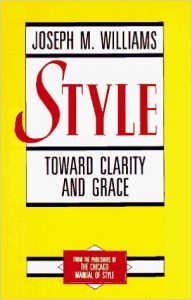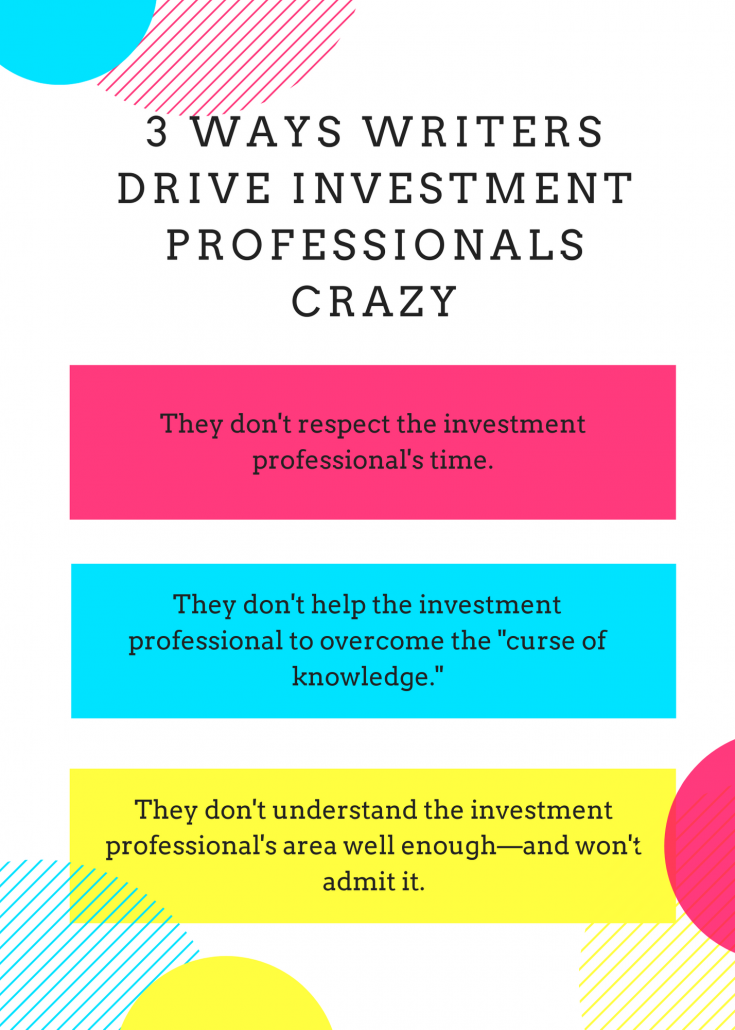When do you push proper usage on your writing clients?
Some battles over proper usage in writing are worth fighting. Others are not. When should you push your clients on proper usage? If you write or edit for investment, wealth management, or other financial services firms, you’re likely to grapple with this question.
By the way, when I say “usage,” I refer to a host of issues that sometimes get lumped under “grammar.” In addition to grammar, it includes punctuation, spelling, and other issues of writing style.
When I say “clients,” I include internal clients—such as subject-matter experts or bosses—for staff writers and marketers, in addition to the clients of external writers and editors.
I usually point out improper usage. However, I divide usage issues into three categories. The seriousness of the category dictates how strongly I fight my client on an issue.
Category 1. Embarrassing or unethical mistakes
If your client writes “they’re” instead of “their,” it’s a no-brainer to insist on a correction. “They’re” instead of “their” is flat out wrong. These battles are usually easy to win. It’s best to treat them lightly, with the comment along the lines of “Oops, a typo sneaked in. It’s hard for all of us to proofread our own work.” I may also insert a link to an article explaining usage practices the client may not know.
Susan Rooks, Grammar Goddess, agrees with me about correcting outright mistakes. In response to my LinkedIn question about when to correct mistakes, she said, “When they will confuse others, or embarrass themselves or their company. While I do worry somewhat about punctuation, I am more concerned with the words that writers use. Mixing up homophones, using the wrong terms, or not seeing the impact of negative language on readers are all worth going to bat for.”
On rare occasions, I run into issues of copyright infringement. It has always been an innocent mistake. The person didn’t realize that simply naming the source doesn’t give you the right to use any text, exhibit, or image. It’s important to push clients on these issues. Why? Because their mistakes could inspire the copyright holders to sue them, bringing financial penalties and embarrassment. You’ll find resources to educate your clients about “fair use” of copyrighted material in my article on “Legal danger for financial bloggers: Two misconceptions, three resources, one suggestion.” You’ll also find tips in “Credit sources fairly in your financial blog posts.”
If you’re in financial services, your client will presumably run content through a compliance review. If you know that certain content typically requires a certain disclosure, you can mention that. But the client’s compliance professional is the ultimate authority.
Category 2. Mistakes that hurt reading comprehension
Sometimes your clients produce writing that’s unclear because of its vocabulary, length, or organization. That’s not good for them or their company’s pursuit of marketing or educational goals.
Many clients express gratitude and relief when you streamline their writing. Some do not. Instead, they cling to their original wording, perhaps because of issues I discussed in “Why experts love bad writing.”
What can you do with stubborn clients? Here are four options:
- Present evidence for making changes. My articles, “Seven Ways to Talk Your Financial Execs Out of Jargon and Bad Writing” (free registration with MarketingProfs required) and “Financial jargon killer: The Wall Street Journal,” make a case for better writing. You could also share well-written articles by experts whom your client respects. As with category 1, it’s wise to take a respectful approach. Suggest changes by presenting information that you say your client might not have known. As Bob Hughes, director at U.K.-based Grammar Ally, says, “Persistence usually works better then insistence: the persuasive, collaborative approach versus the adversarial. Most people – there are exceptions – welcome information they simply didn’t have before. This makes ‘support’ and ‘sharing knowledge’ preferable to ‘correction’, which is often taken to be drawing attention to something someone ‘got wrong’ rather than simply didn’t know.”
- Meet your client partway. Figure out what your client cares most about. See if you can satisfy their needs, while also improving the writing. For example, if the client insists on using the term “Goldilocks market,” define the term parenthetically. You’ll find examples of this in “Plain language: Let’s get parenthetical.” If it’s just one sentence that’s a problem, consider presenting several alternatives to your client.
- Appeal to higher authorities. Does your boss, or the person at the client company who pays your invoices, believe in good writing? They may let you overrule your subject-matter expert’s wording. But tread carefully if you take this approach. It may not make a difference if the expert never sees the text again. On the other hand, if the expert sees it, it could create ill will.
- Cave in. In other words, pick your battles carefully. Some things aren’t worth fighting over, especially if they’re small problems in an obscure part of a well-written document.
Category 3. Mistakes that don’t inflict major damage
Some mistakes bother me much less than others. These are typically mistakes that hurt reading comprehension less than others. For example, excessive capitalization of titles is common in financial services.
I often see “Jane Smith, President and Chief Investment Officer” instead of “Jane Smith, president and chief investment officer.” That’s wrong, wrong, wrong. Words that are capitalized to stress their importance drive professional writers crazy. The use of initial capitals in “President and Chief Investment Officer” does slow reading comprehension slightly. But its effect is small compared with the effect of a sentence that improperly uses “they’re” instead of “their.”
When I have clients who use excessive capitalization, I inform them about the proper practice. Then, I let them decide about what to do. I save my energy for more important battles, which typically fall into Category 2.
Image courtesy of imagerymajestic/freedigitalphotos.net

Note: On Jan. 31 I edited this post to correct a typo.







